At Kijongo Bay, we are lovers of anything coconut, so we thought we would let you in on our secret on how we make our creamy coconut milk, which is served daily at breakfast. Being situated right on the beach, surrounded by coconut palms, access to fresh coconuts doesn't pose a problem here at Kijongo Bay. Coconut milk's rich and creamy taste, with its hint of sweetness and tropical flavour, goes really...
How to Make Homemade Coconut Oil
From the copra, at Kijongo Bay Resort, we produce our own virgin coconut oil, which we use for making home-made soap.
How to Make Cold Pressed Coconut Oil
During this time of Covid, making your own coconut oil may be more cost effective than store bought options, depending on how accessible fresh coconuts are of course. We are fortunate at Kijongo Bay Resort, as there is never a shortage of coconuts.
Cold pressed coconut oil is sometimes also referred to as Extra Virgin coconut oil. However, to be totally honest, it’s only a marketing gimmick. Unlike olive oil, which is the real deal when it comes to cold pressed olive production, as there are distinct differences between virgin and extra virgin olive oil. Whereas with coconut oil there is no discernable difference between cold pressed or heated.
Coconut oil whether cold pressed or heated remains virtually the same once produced. We prefer to use the cold press method as it suits our warm environment here.
The good news is that our coconut oil recipe is totally unrefined. The only thing that is added during production, that didn’t come from a coconut, is some water!
So, let’s get to the actual method:
You begin the oil process by first making coconut milk, as follows:
Step 1: Break open your coconuts.
Step 2: Use a coconut stool to make coconut shavings from the fresh coconut meat. It looks a bit like a medieval torture device, but is a traditional device, which makes grating coconut meat so much easier. If you don’t have one, you can easily use a knife and scrape out the white flesh from the coconut and chop the meat into smaller pieces or grate it.
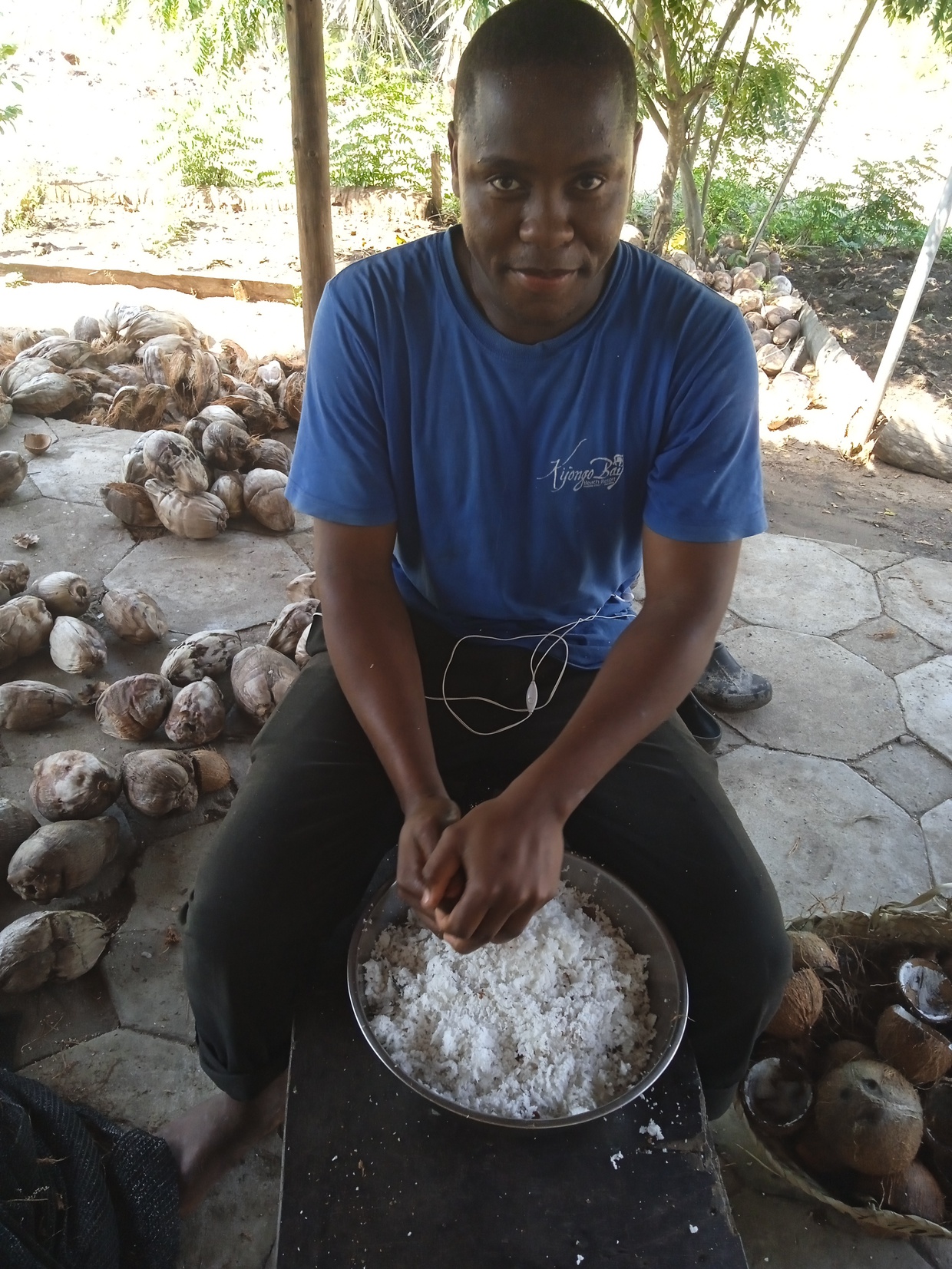 An easy way to extract and grate coconut meat, using the coconut stool.
An easy way to extract and grate coconut meat, using the coconut stool.
Step 3: Before blending, remember to rinse the meat to ensure that any sand or brown coconut particles are washed out.
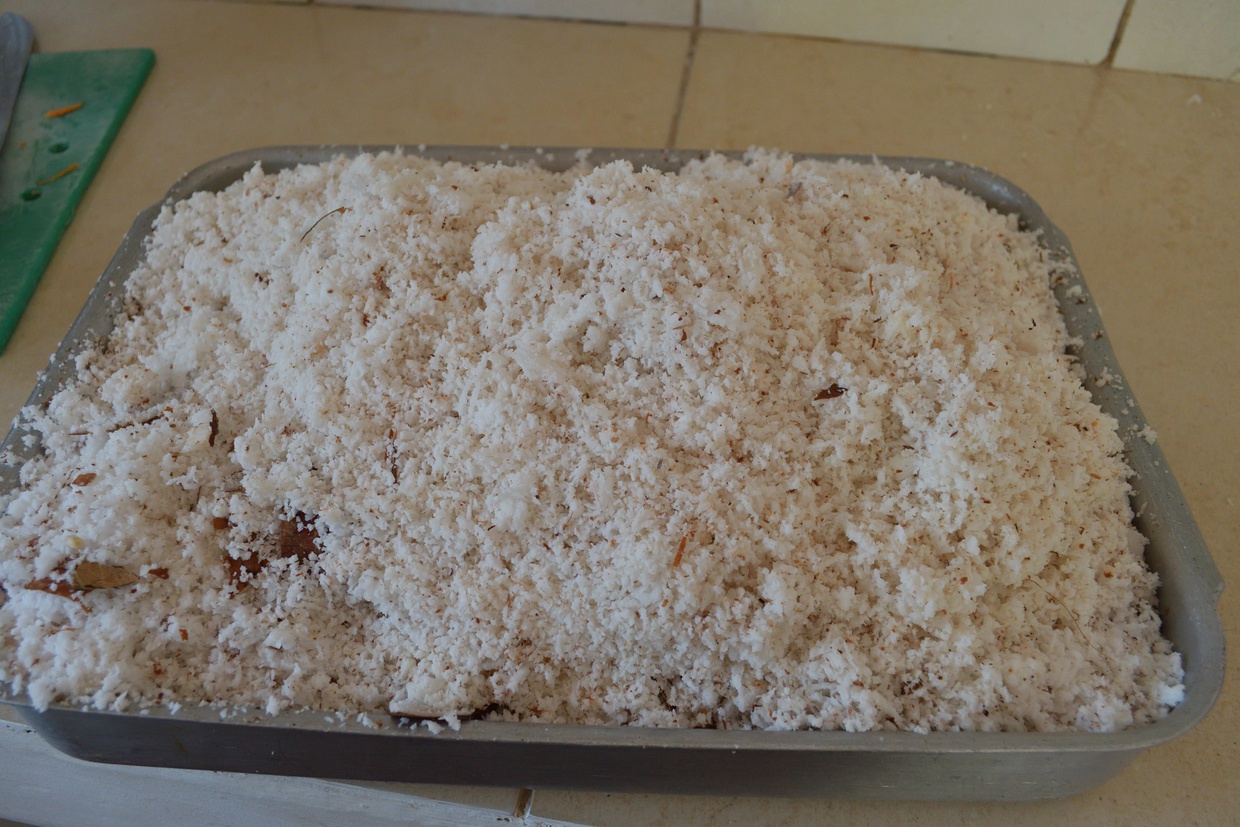 Coconut meat roughly grated ready for blending.
Coconut meat roughly grated ready for blending.
Step 4: Place the coconut meat, in small batches, into a blender, cover the meat with fresh water and blend until you have a smooth consistency. Empty the blended meat into a clean bowl, continue blending all the meat, so that it is all the same smooth consistency.
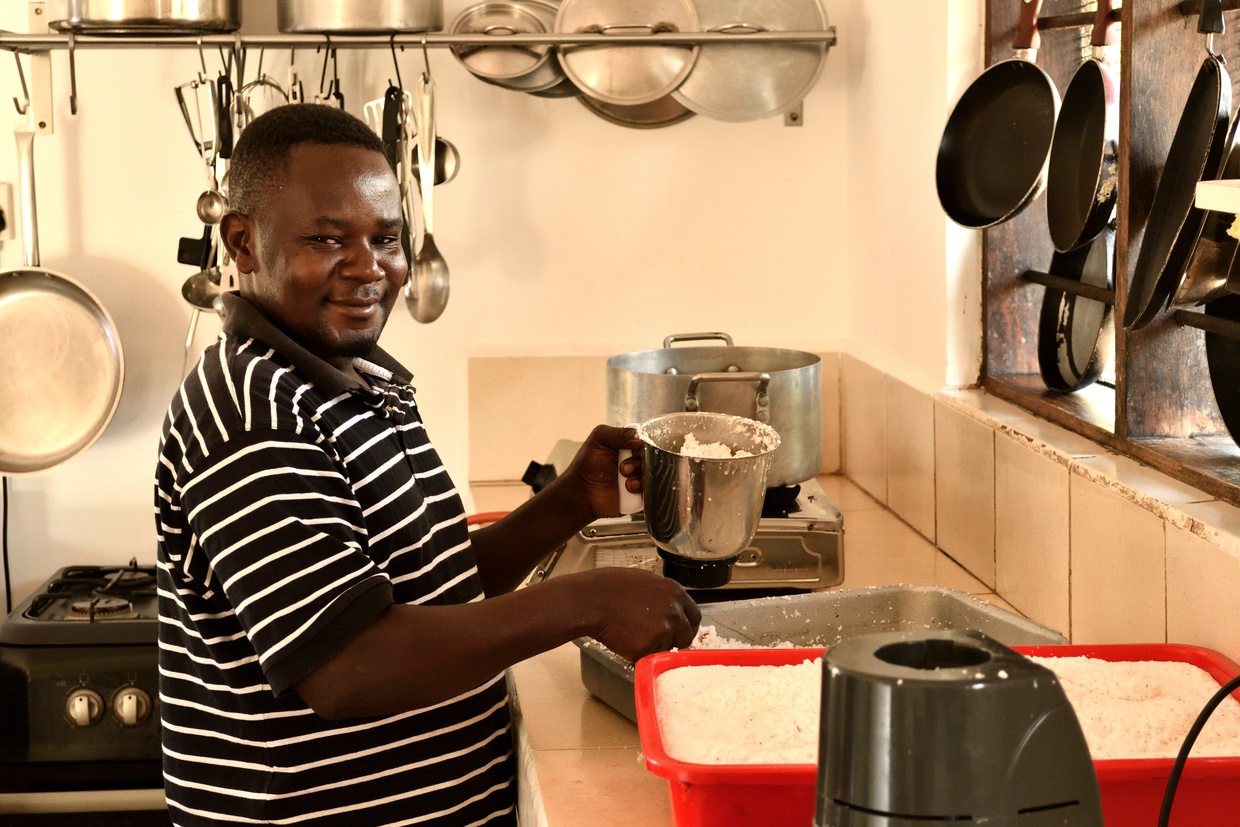 Blend your grated coconut meat in small batches.
Blend your grated coconut meat in small batches.
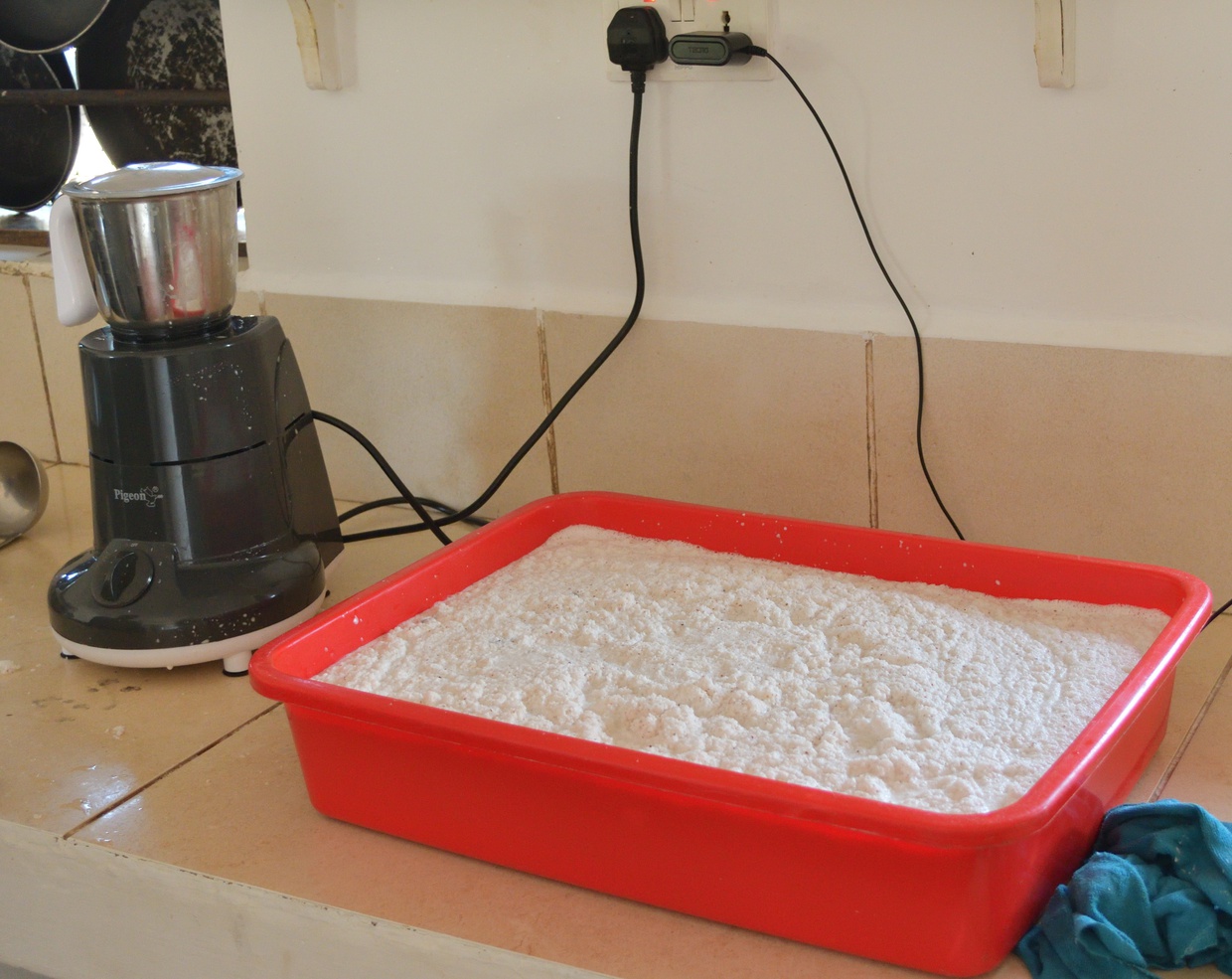 Once blended, your coconut meat should look like the this example above.
Once blended, your coconut meat should look like the this example above.
Step 5: Place a strainer or cheesecloth over a clean bowl, add the coconut pulp and squeeze out and strain the milk from the meat.
The next part of the process is to transform the milk into coconut Oil:
Step 6: Cover your coconut milk with a lid and leave in a cool place to settle undisturbed overnight. Alternatively, you can place the covered bowl in your fridge, as this will hasten the process.
Step 7: The following day, you will see that a white curd has formed on the top of the coconut milk bowl. This layer contains oil, water & curds. Using a spoon, you need to gently scoop the hard layer out and place into a new, preferably a see-through, bowl, ensure that you do not add any of the water to the new bowl.
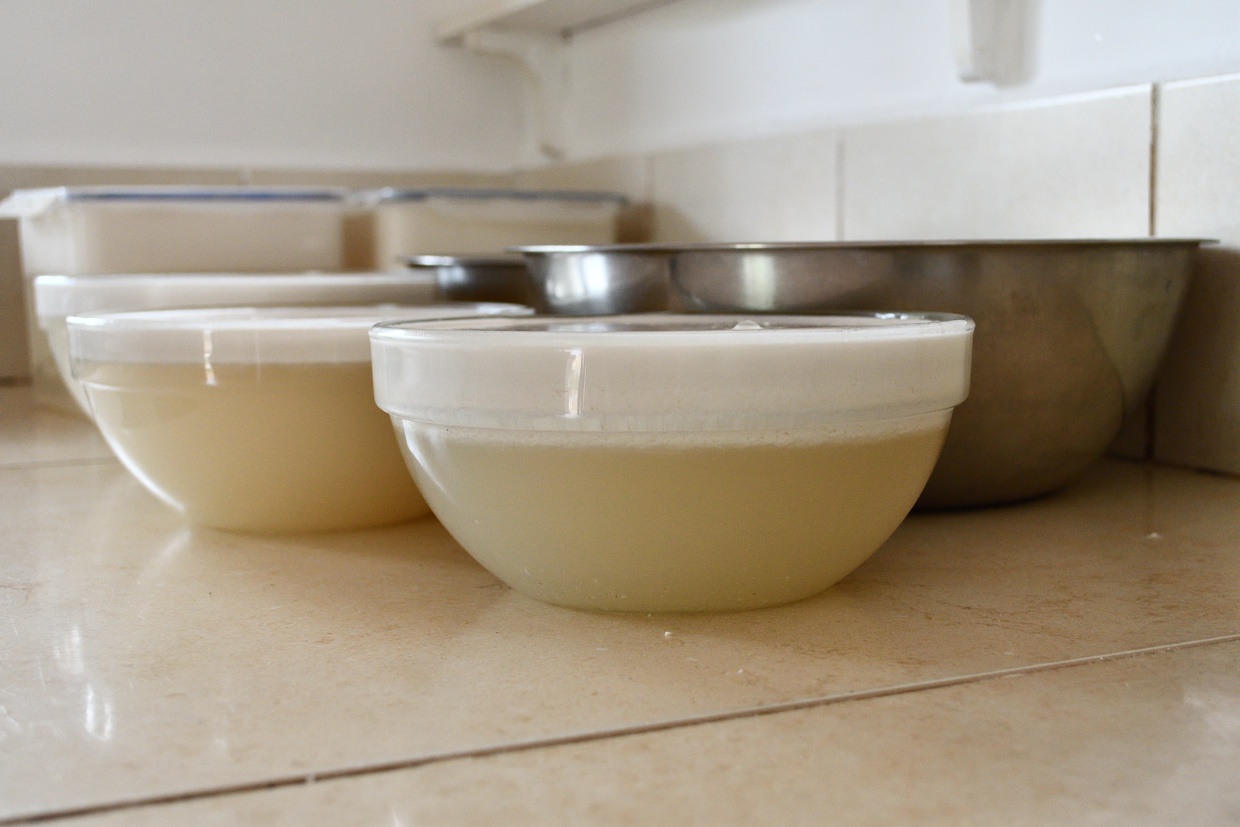 Use clear bowls, so that you can see the different layers form.
Use clear bowls, so that you can see the different layers form.
Step 8: For the oil to separate from the curd some heat is needed, the easiest way to do this is to leave the bowl with the curd in the sun for a few hours. Eventually, after about 3 hours, you’ll notice that the coconut oil begins to separate and forms three layers – the bottom layer is water, the middle curds and the top layer is coconut oil. Which is why it’s best to use a transparent bowl, so that you can easily see the different layers.
Step 9: Once the oil has separated, place the bowl in your freezer for around 30 mins, be careful on how you place the bowl to ensure that the layers do not mix. The oil layer will freeze the fastest, leaving behind the water and curds.
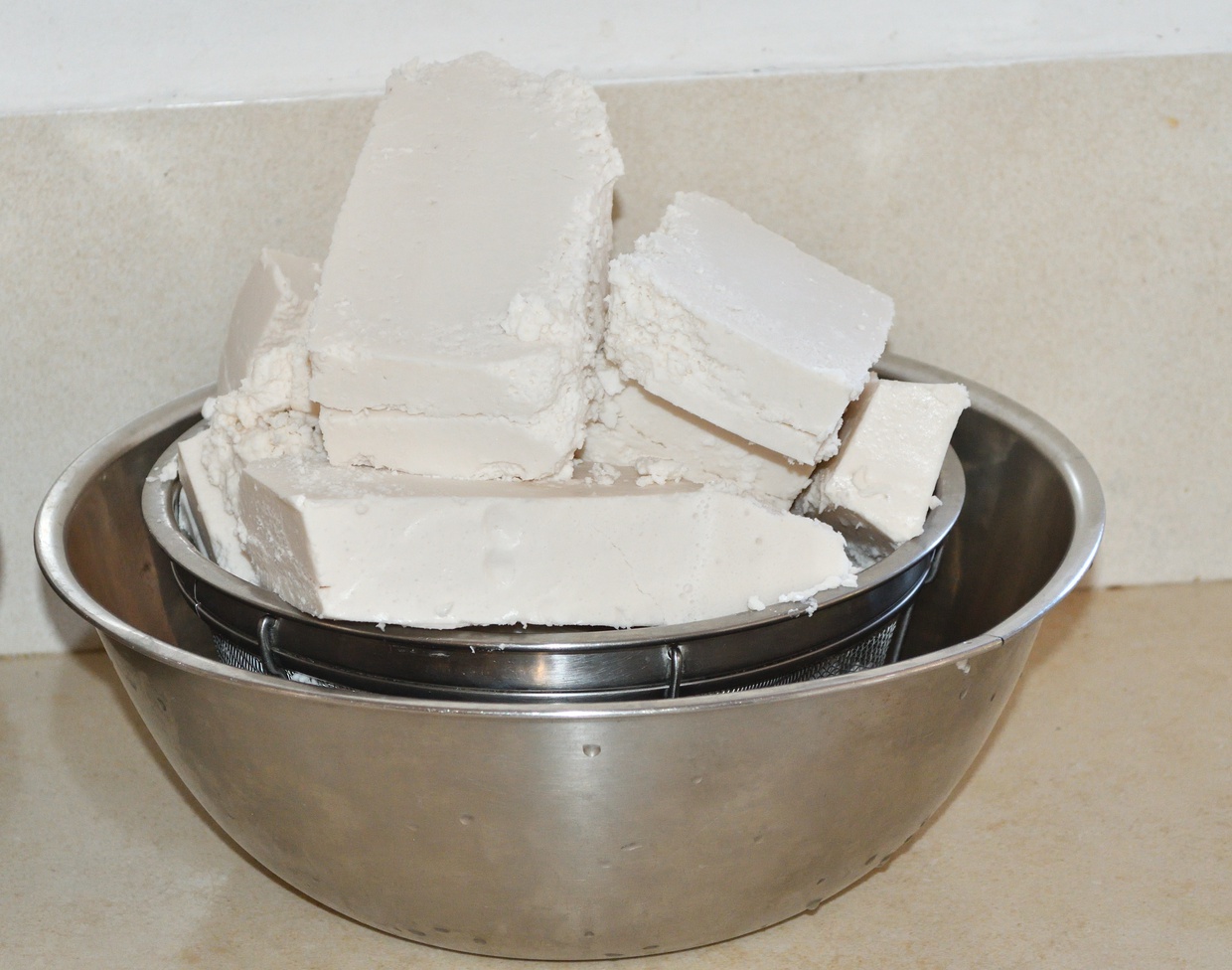 Place your coconut oil blocks in a colander or sieve over a bowl to remove any excess liquids.
Place your coconut oil blocks in a colander or sieve over a bowl to remove any excess liquids.
Step 10: Remove the bowl from the freezer, and gently scoop out the oil layer, using a slotted spoon, to allow any water to drain away. Place the oil blocks into a colander over a bowl and let any residual water drain away. The slower that you do this part the less likely will you contaminate your coconut oil with any water. Gently heat your oil, so that it becomes liquid, and pour into storage jars.
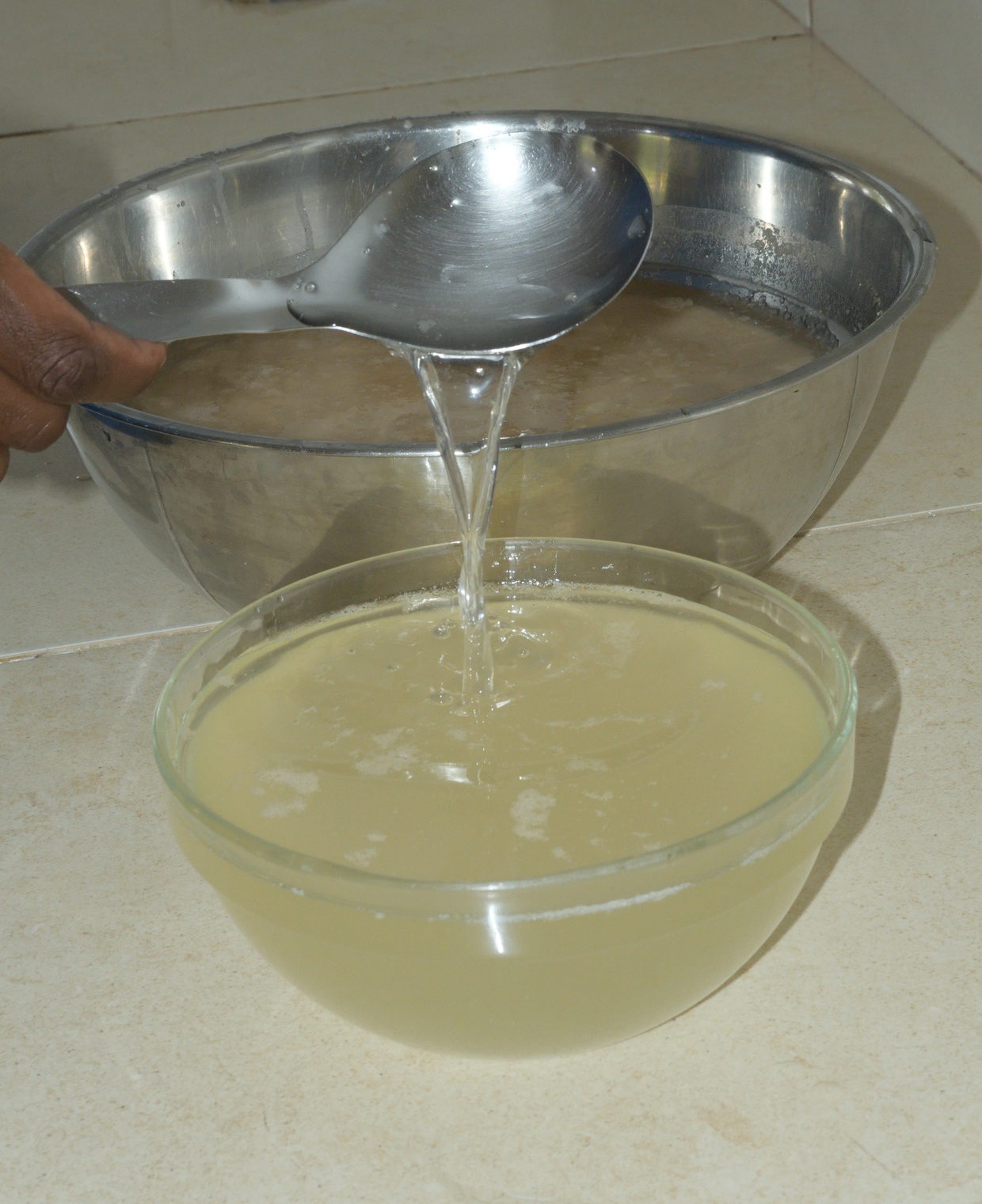 Once gently heated your coconut solid produces unrefined coconut oil.
Once gently heated your coconut solid produces unrefined coconut oil.
And you're done!
Your cold-pressed coconut oil is now ready for use.
Coconut oil has multiple uses, including a mask for your hair, applied to your skin as a moisturizer, used for cooking or for making soap.
Further Reading
At Kijongo Bay Resort we have an amazing 140 Coconut trees on the grounds, which are regularly harvested. The latest harvest of 78 trees yielded over 1000 coconuts! So, what do we do with all these coconuts?
If you turn back time, to around 110 million years ago, during the Cretaceous period, turtles had already begun to evolve. And, since evolving, so long ago, turtles haven't changed much.

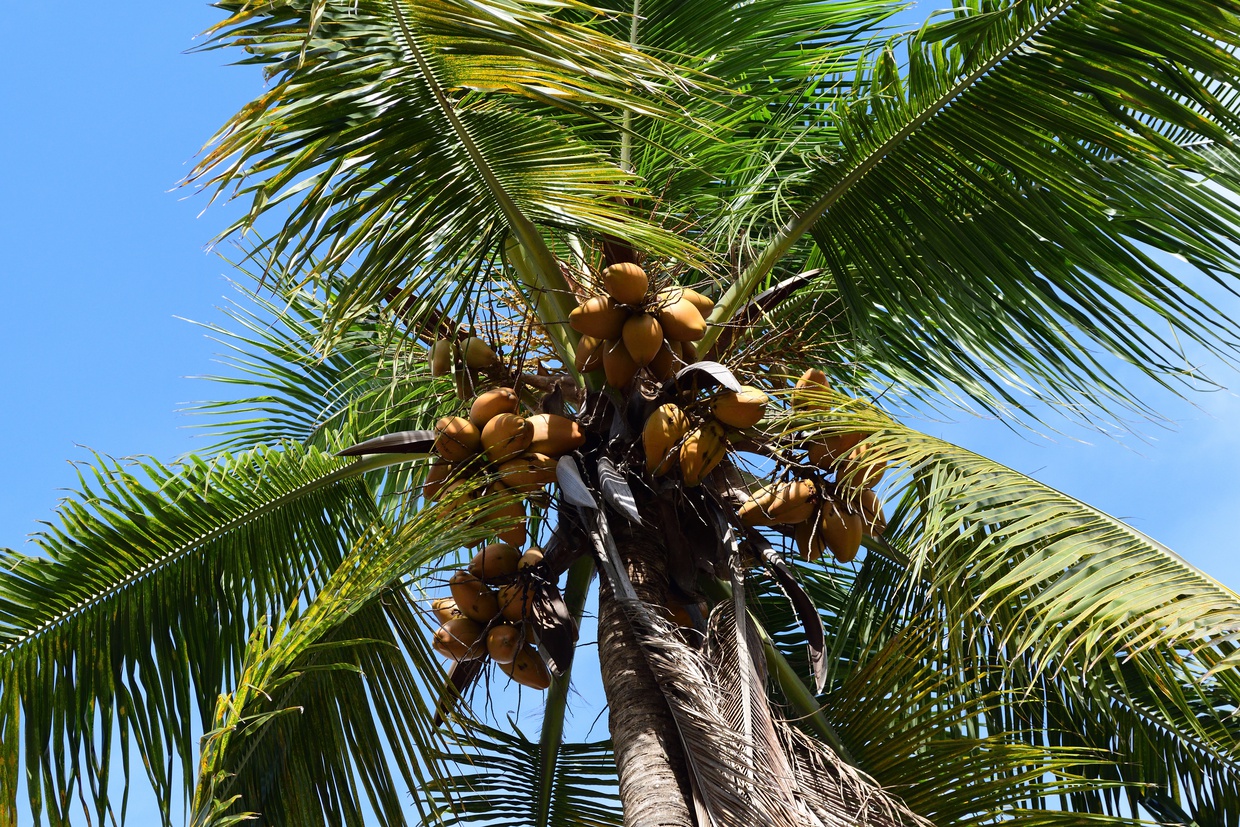







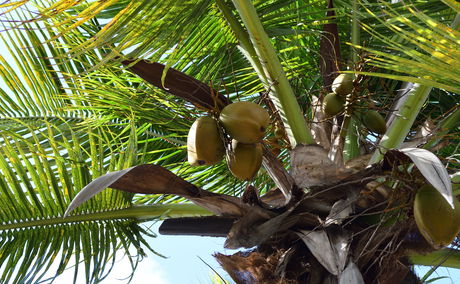

Share This Post